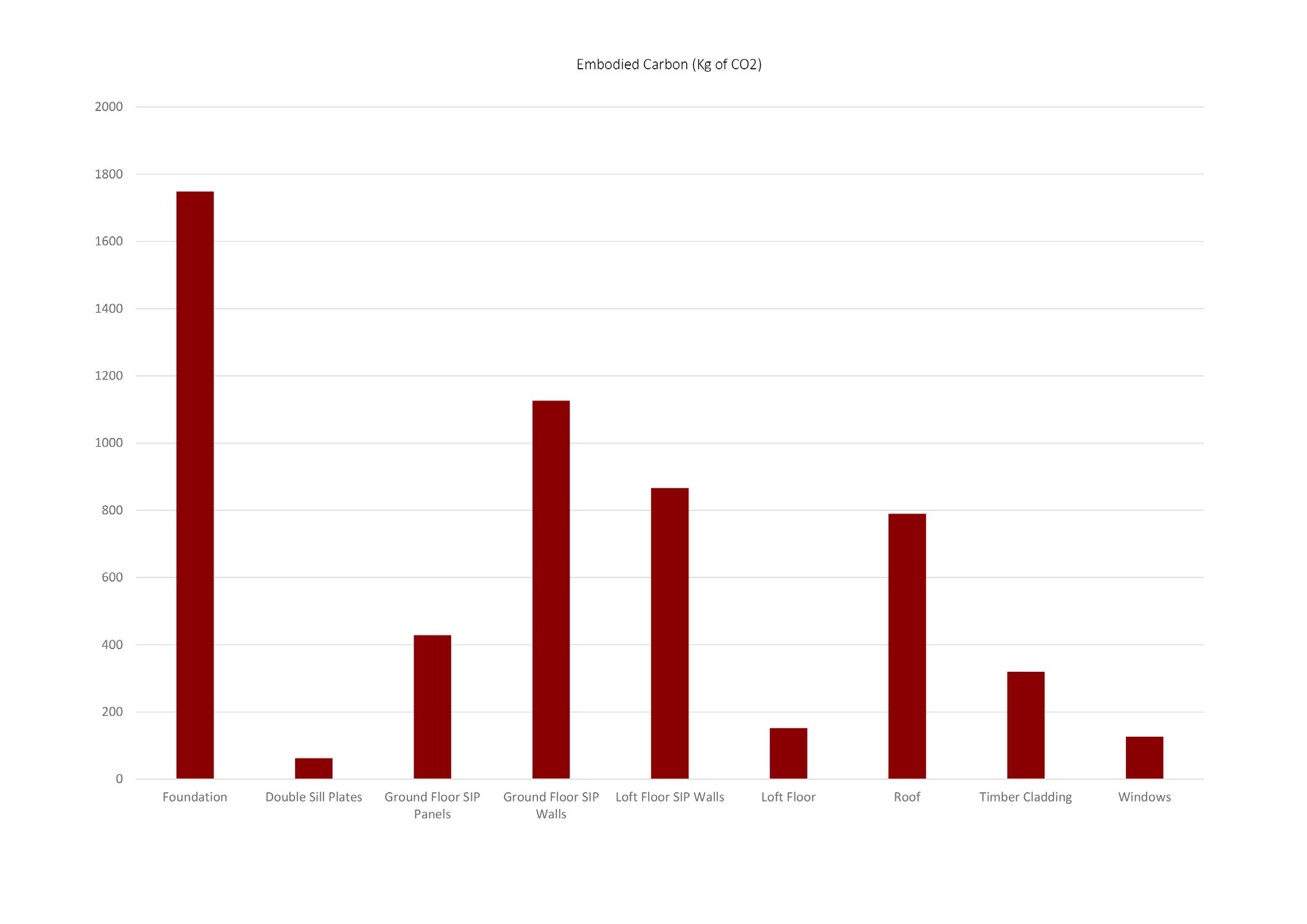
1 minute read
CARBON ANALYSIS ROOF EMBODIED CARBON
The calculations uses OSB, C16 and C24 Timber, Polyurethane Insulation and Zinc for its calculations. The calculations split the roof into 7 seperate categories and then added the total of each category to get the total embodied carbon
The OSB of the SIPs have an embodied carbon of 334.88 KgCO2/Kg.
Advertisement
The Insulation of the SIPs have an embodied carbon of 472.3488 KgCO2/Kg.
The SIP Block Splines have an embodied carbon of 28.2243 KgCO2/Kg.
The Top, Bottom and End plates have an embodied carbon of 19.4883 KgCO2/Kg.
The Roof Rafters have an embodied carbon of 47.4978 KgCO2/Kg.
The Zinc Sheets have an embodied carbon of 0.6084 KgCO2/Kg.
Total embodied carbon is 789.1782 Kg of C02.
A traditional pitched roof can have up to 8 different parts from the tiles, tile battens, counter battens, insulation, service void, rafters and plasterboard. Compared to a traditional pitched roof the SIP roof is able to provide the same and even better structural and thermal qualities within one product which reduces the carbon emissions from sourcing different materials. The tiny home roof system only needs the rafters, Roof SIPs and Zinc roofing system.

Traditional pitched roof (FirstInArchitecture)
The chart below shows the calculations of the roof buildup.
Carbon Emissions Calculations
The data calculations only include material sourcing to the end of the factory processes and not the transportation.









